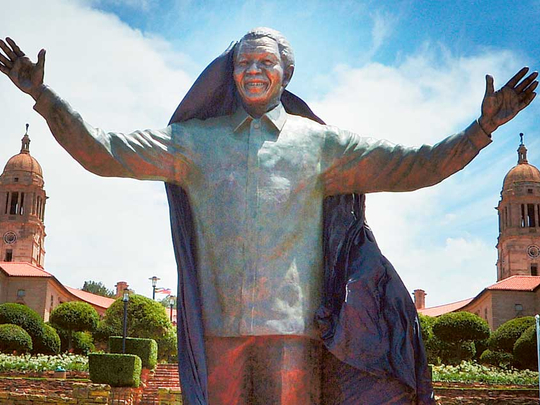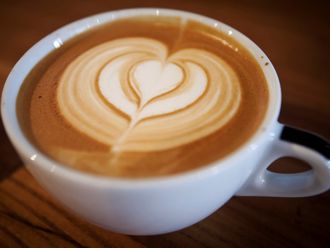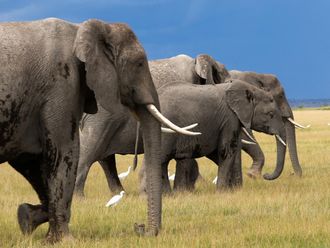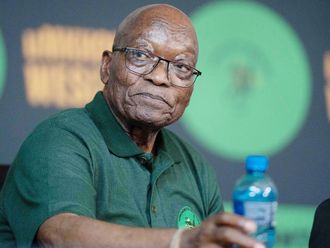
Pretoria: On a public holiday dedicated to reconciliation, South Africans started coming to terms with the loss of Nelson Mandela, unveiling a giant statue Monday to honour his struggle for equality.
A day after the democracy icon was buried with full honours in his boyhood village, a nine-metre (30 foot) bronze likeness was unveiled on the lawns of the Union Buildings, the seat of government in Pretoria.
This is where generations of apartheid heads of state signed many of the racial laws Mandela spent most of his life fighting against, but also where he was inaugurated as South Africa’s first black president in 1994.
Last week, the venue saw up to 100,000 people stand in hours-long queues to file past the statesman’s open casket in a last token of respect as he lay in state for three days.
President Jacob Zuma presided over the unveiling of the giant statue of a broadly smiling Mandela in mid-stride, arms stretched out in a welcoming gesture, sporting his trademark “Madiba shirt”.
Zuma said the position of the arms “denotes that South Africa is now a democratic country, he is embracing the entire nation, he is advancing to the nation to say: ‘let us come together, lets us unite’.”
The 4.5-tonne statue is the largest of many erected around the world in honour of the anti-apartheid hero. Many of them show Mandela with his fist raised defiantly in the air.
Built at a cost of some eight million rand (Dh2.84 million) $800,000), the statue replaces one of Barry Hertzog, an Afrikaner nationalist and general who was prime minister of South Africa from 1924 to 1939.
Symbolically, members of the Hertzog family were present for Monday’s ceremony.
For 50 million compatriots, Mandela was not just a statesman and president, but a moral guide who led the country away from internecine racial conflict.
While the man lovingly called the father of the “rainbow nation” had been critically ill for months, the announcement of his death aged 95 on December 5 nevertheless sent a shock wave through a country struggling to carry forward his vision of a harmonious multiracial democracy of shared prosperity.
South Africans of all hues gathered on the lawns of the Union Buildings for Monday’s ceremony, watching the unveiling on big screens as a 21-gun salute rang out and air force jets flew over the venue in a “missing man” formation usually reserved to honour a fallen pilot.
“Reconciliation, peace, that’s what this is about,” said Afrikaner Retha Jansen, 63, who said she had come to be part of history.
At Sunday’s funeral, Zuma had urged the country to carry on Mandela’s legacy of unity.
“One thing we can assure you of today, Tata (father), as you take your final steps, is that South Africa will continue to rise ... because we dare not fail you,” he said.
The Nobel peace laureate was given a state burial in his rural boyhood village of Qunu, marked by tearful eulogies and strident vows to pursue his ideals.
“Madiba’s values and ideals must guide us as a nation as we contemplate a South Africa without his towering presence,” a government statement said, using the clan name by which the anti-apartheid hero is fondly known.
The Day of Reconciliation was first marked in 1995, the year after South Africa’s first-ever democratic elections which ended decades of racial oppression.
Before that, December 16 had been commemorated by Afrikaners, the custodians of apartheid, for over 150 years.
At first, it was called Day of the Covenant, honouring a victory of the early Afrikaners, mainly descendants of Dutch settlers, over Zulu warriors in an 1838 clash that became known as the Battle of Blood River.
Some Afrikaners still mark the day today.
But December 16 is also the anniversary of the founding of Umkhonto we Sizwe (Spear of the Nation) — the armed wing of the now ruling African National Congress, which Mandela founded.
After the all-race vote in 1994, the day was retained as a holiday and renamed.
“Former president Mandela is associated with the promotion of reconciliation which is why the day was chosen for the unveiling [of the statue]” said the government.
The event had been planned long before Mandela’s death.
After a 10-day mourning period, the national flag was raised on Monday from its half-mast position, and was flying as normal.












